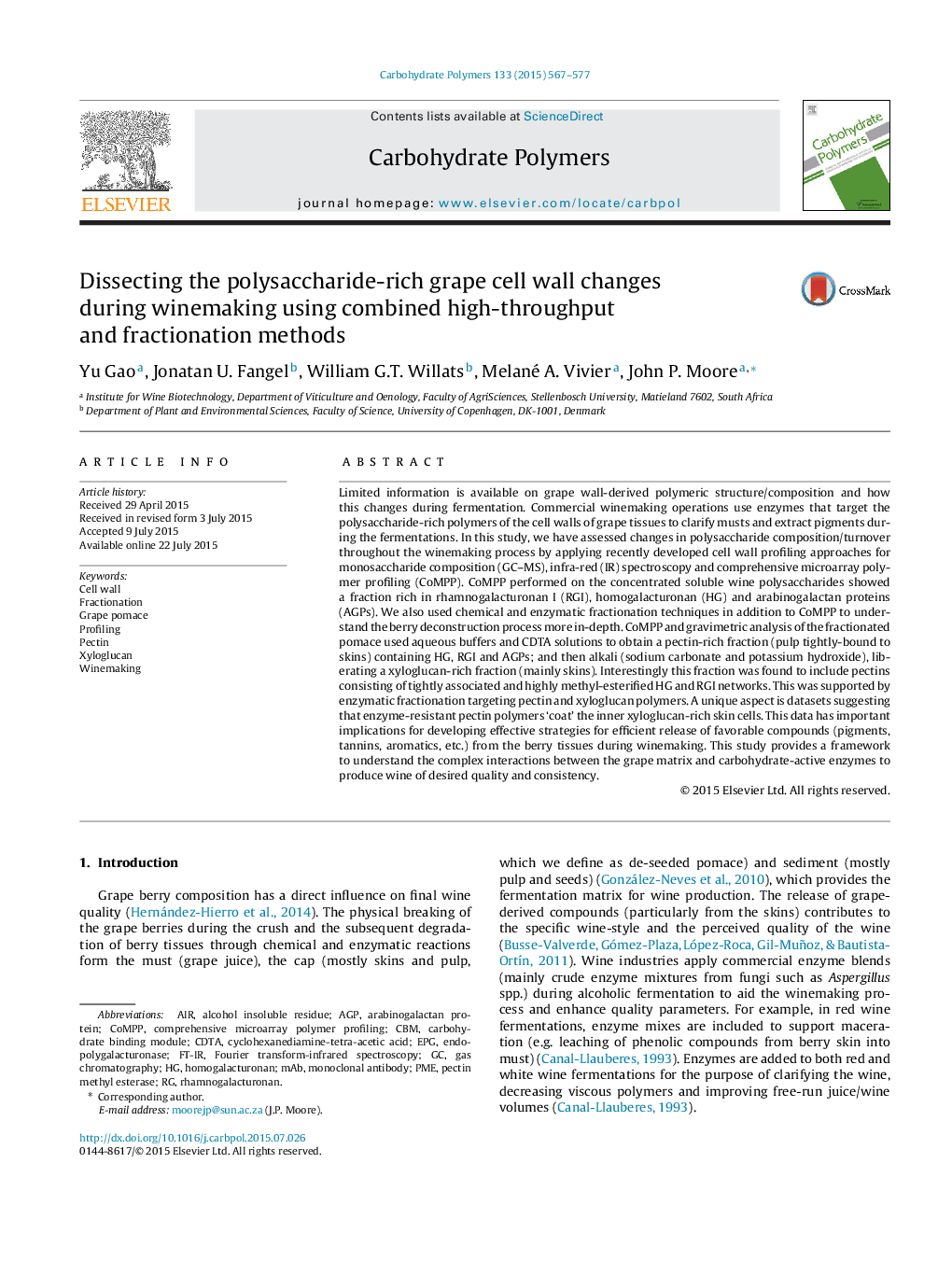| کد مقاله | کد نشریه | سال انتشار | مقاله انگلیسی | نسخه تمام متن |
|---|---|---|---|---|
| 7787851 | 1500625 | 2015 | 11 صفحه PDF | دانلود رایگان |
عنوان انگلیسی مقاله ISI
Dissecting the polysaccharide-rich grape cell wall changes during winemaking using combined high-throughput and fractionation methods
ترجمه فارسی عنوان
تجزیه دیواره های سلولی انگور غنی از پلی ساکارید در طی تولید آب، با استفاده از روش های ترکیبی بالا و کسرکردن
دانلود مقاله + سفارش ترجمه
دانلود مقاله ISI انگلیسی
رایگان برای ایرانیان
کلمات کلیدی
mAbCoMPPCDTACBMAGPrhamnogalacturonanMonoclonal antibody - آنتی بادی مونوکلونالEndo-polygalacturonase - اندو پلی گلاکترونازepg - اپگalcohol insoluble residue - باقی مانده نامحلول الکلFourier transform-infrared spectroscopy - تبدیل فوریه طیف سنجی مادون قرمزFractionation - تقسیم بندیCell wall - دیوارهٔ یاختهXyloglucan - زایللوگکانWinemaking - شراب سازیPME - شرکتهای کوچک و متوسطFT-IR - طیف سنجی مادون قرمز تبدیل فوریهcarbohydrate binding module - ماژول اتصال کربوهیدراتhomogalacturonan - هموگلاکتورونانAIR - هواarabinogalactan protein - پروتئین arabinogalactanProfiling - پروفایلPectin - پکتینPectin methyl esterase - پکتین متیل استرازGas chromatography - کروماتوگرافی گازیGrape pomace - گلوتن انگور
موضوعات مرتبط
مهندسی و علوم پایه
شیمی
شیمی آلی
چکیده انگلیسی
Limited information is available on grape wall-derived polymeric structure/composition and how this changes during fermentation. Commercial winemaking operations use enzymes that target the polysaccharide-rich polymers of the cell walls of grape tissues to clarify musts and extract pigments during the fermentations. In this study, we have assessed changes in polysaccharide composition/turnover throughout the winemaking process by applying recently developed cell wall profiling approaches for monosaccharide composition (GC-MS), infra-red (IR) spectroscopy and comprehensive microarray polymer profiling (CoMPP). CoMPP performed on the concentrated soluble wine polysaccharides showed a fraction rich in rhamnogalacturonan I (RGI), homogalacturonan (HG) and arabinogalactan proteins (AGPs). We also used chemical and enzymatic fractionation techniques in addition to CoMPP to understand the berry deconstruction process more in-depth. CoMPP and gravimetric analysis of the fractionated pomace used aqueous buffers and CDTA solutions to obtain a pectin-rich fraction (pulp tightly-bound to skins) containing HG, RGI and AGPs; and then alkali (sodium carbonate and potassium hydroxide), liberating a xyloglucan-rich fraction (mainly skins). Interestingly this fraction was found to include pectins consisting of tightly associated and highly methyl-esterified HG and RGI networks. This was supported by enzymatic fractionation targeting pectin and xyloglucan polymers. A unique aspect is datasets suggesting that enzyme-resistant pectin polymers 'coat' the inner xyloglucan-rich skin cells. This data has important implications for developing effective strategies for efficient release of favorable compounds (pigments, tannins, aromatics, etc.) from the berry tissues during winemaking. This study provides a framework to understand the complex interactions between the grape matrix and carbohydrate-active enzymes to produce wine of desired quality and consistency.
ناشر
Database: Elsevier - ScienceDirect (ساینس دایرکت)
Journal: Carbohydrate Polymers - Volume 133, 20 November 2015, Pages 567-577
Journal: Carbohydrate Polymers - Volume 133, 20 November 2015, Pages 567-577
نویسندگان
Yu Gao, Jonatan U. Fangel, William G.T. Willats, Melané A. Vivier, John P. Moore,
